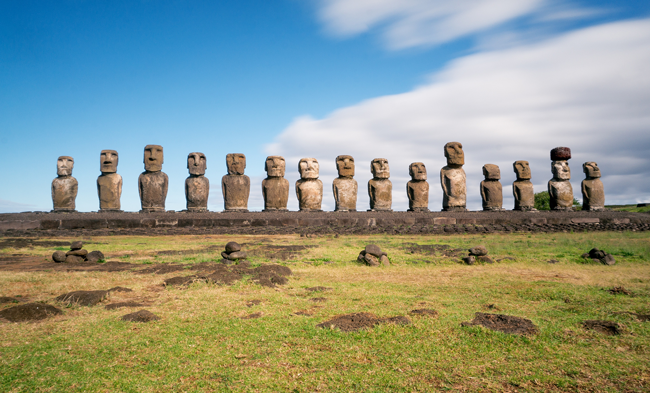

A clear patch on the horizon at sunset was enough for a view of the bright orange globe sinking over a vast expanse of ocean as the tide rippled just a few yards away. I grabbed my camera and tried to capture the moment. The sun bade its farewell for the evening and all was dark and silent.The vague outline of a familiarly shaped statue by the shore was still there to remind us of where we were.
This was Easter Island. Hanga Roa, the only population center of any size on this 45 square mile (117 square kilometer) southeastern Pacific island, also is home to a number of small hotels and guest houses, plus the largely silent airport.
Getting to Easter Island
Yes, Easter Island is remote – 1,260 miles (2,030 kilometers) from the nearest other inhabited island and 2,300 miles (3,700 kilometers) from the South American mainland. The few scheduled flights can, as we found, be subject to severe delays when the weather turns rough.
This isolation, though, adds to the atmosphere. The rough-hewn local facilities, the crystal clear stars on a cloud-free night and the air of mystery that still hangs over the monolithic statues, the moai, also play their part.
We may not have had reliable hot water at our guest house, and we may have needed flashlights to avoid turning an ankle in the dark and rutted streets at night, but as any real estate agent will tell you: location, location, location.
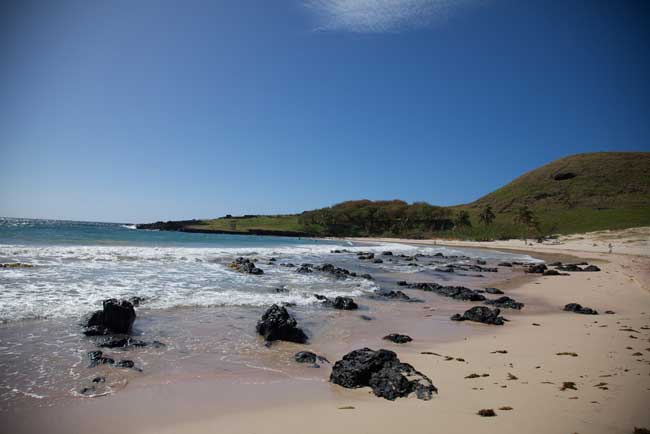
There is more to do than statue spotting, as well. The volcanic nature of the island makes for excellent hiking, and my two companions and I enjoyed a good day’s walk and some spectacular views by following the trail from Hanga Roa up to the crater of Rano Kau, and nosing around the ancient ancestral village of Orongo. Entry here cost 5,000 Chilean pesos ($10 U.S.) each, and the ticket includes one-time admission to other national park sites on the island.
There was a moment of banter with the park ranger as the woman in our party paid for her partner’s ticket as well as her own. Easter Island is historically Polynesian, with the local name of Rapa Nui, but is now a territory of Chile, with the Spanish name of Isla de Pascua, and sometimes carries the male attitudes of South America.
However, the views of the volcano and the ocean alone were worth the price, and as we gazed down past the petroglyphs at the tiny offshore islands that had once been part of the rigorous “birdman” rituals, we knew we were right not to miss the site.
The less energetic will also find something for their souls on Easter Island. The palm trees, blue waters and sandy beach at Anakena, on the northern coast of the island, provide a stunning backdrop for the moai that stand there.
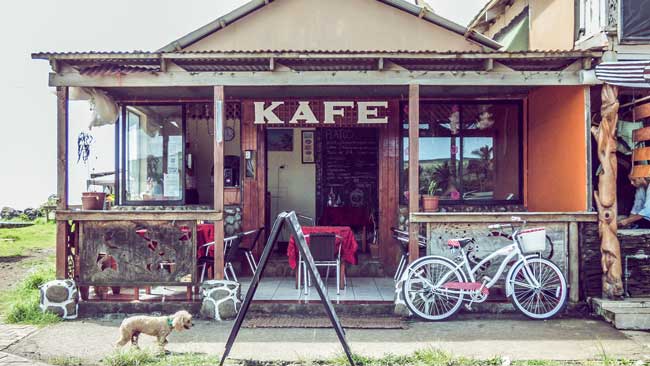
Hanga Roa – Only Town on Easter Island
Hanga Roa also boasts its own attractions, including traditional dance shows, and we found it hard to resist a lazy afternoon with a glass of the South American cocktail pisco sour and a good dig around the local craft markets, as well as visits to the fascinating anthropological museum and the Roman Catholic church, with its intriguingly Polynesian influenced decorations.
It is largely the moai that have brought Easter Island its fame, however, and these are the focal point for many of the visitors who make the five-hour flight from mainland Chile or, less frequently, from Tahiti.
Visiting the Moai on Easter Island
It is possible to visit many of the remaining moai by hiking or driving, but tours are easily bookable through guest houses and offer a way to gain local knowledge about the history of these enigmatic figures.
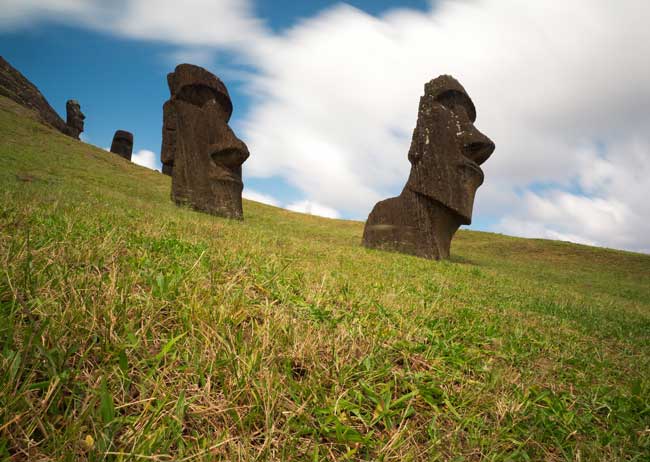
There is truly a mystic dimension to the moai of Easter Island. The exact history remains uncertain, but the statues were apparently carved in memory of specific ancestors, probably more than 500 years ago.
Their hypnotic gaze is still mesmerizing. Looking into the eye sockets of the standing moai felt like attempting a conversation with generations past. It also gave me pause when considering the plight of the many moai that have not been re-erected since being accidentally or deliberately toppled from their platforms, or ahu, over the centuries.
The moai at Ahu Tongariki were re-erected in the 1990s with Japanese assistance. We were captivated by the long line of standing figures and could have spent hours staring in wonder. Even more incredible, though, was to view this spectacle from nearby Rano Raraku, the volcano whose rock was quarried to create these imperious stone beings and which is included in the national park ticket.
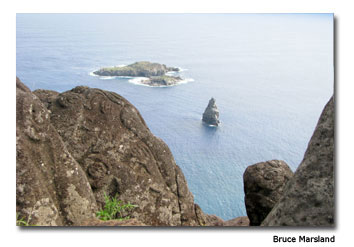
Here, moai lie and stand, half-formed and fully-formed, often neck-deep in earth or still embedded in rock, waiting for the transport that never came; a testament to whatever crisis or conflict it was that ended the moai tradition and left these partially formed spirits to haunt the slopes on which they were in the process of being born.
The moai have witnessed the reshaping of their civilization many times over the past centuries, and the islanders are acutely aware of both their spiritual significance and their historical importance.
Unfortunately, though, tourism brings the risk of damage and erosion. In 2008, a Finnish tourist was caught trying to remove part of a moai as a souvenir. Warnings about such behavior are given at information centers.
This should be self-evident, and we were acutely aware that the business that we, as tourists, were bringing to this small society must go hand-in-hand with respect for the culture that we had journeyed so far to admire.
As it is, Easter Island is a jewel in the Pacific. In September, at the beginning of spring, we had much of the scenery to ourselves. When it shone, the sun was easily hot enough for sunbathing, but the weather can change quickly.
It all adds to the sense of mystery and raw nature that dominates this small land surrounded by the enormity of the Pacific Ocean.
- Travel Guide to Colorado - April 26, 2024
- Travel Guide to Croatia - April 26, 2024
- Top 10 Things to Do in Ireland - April 25, 2024
